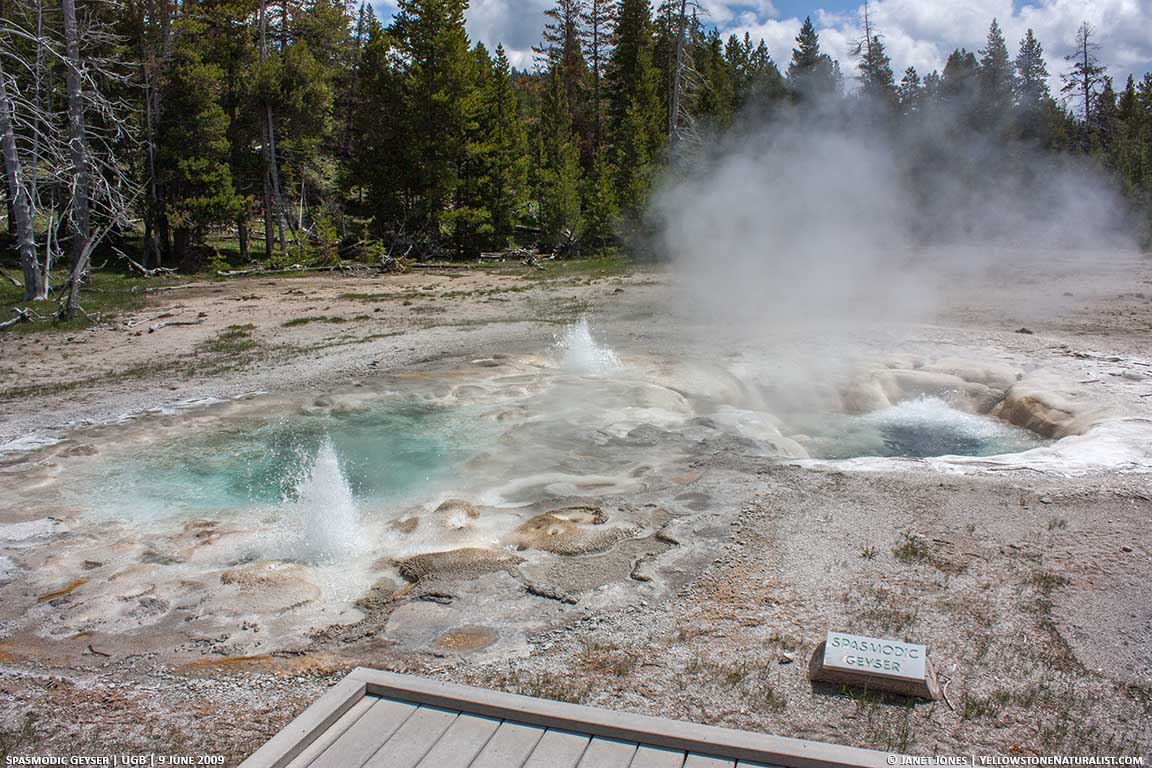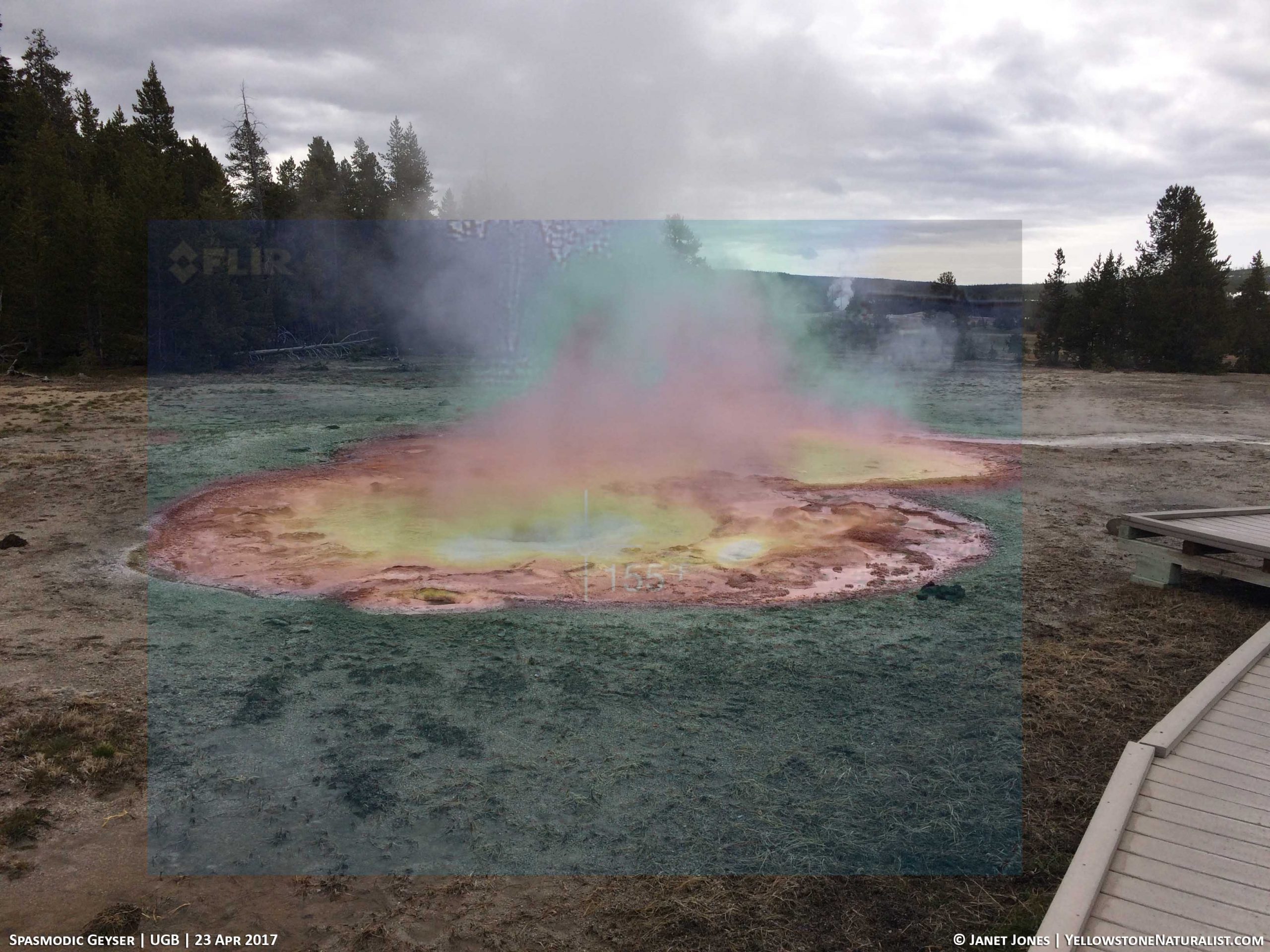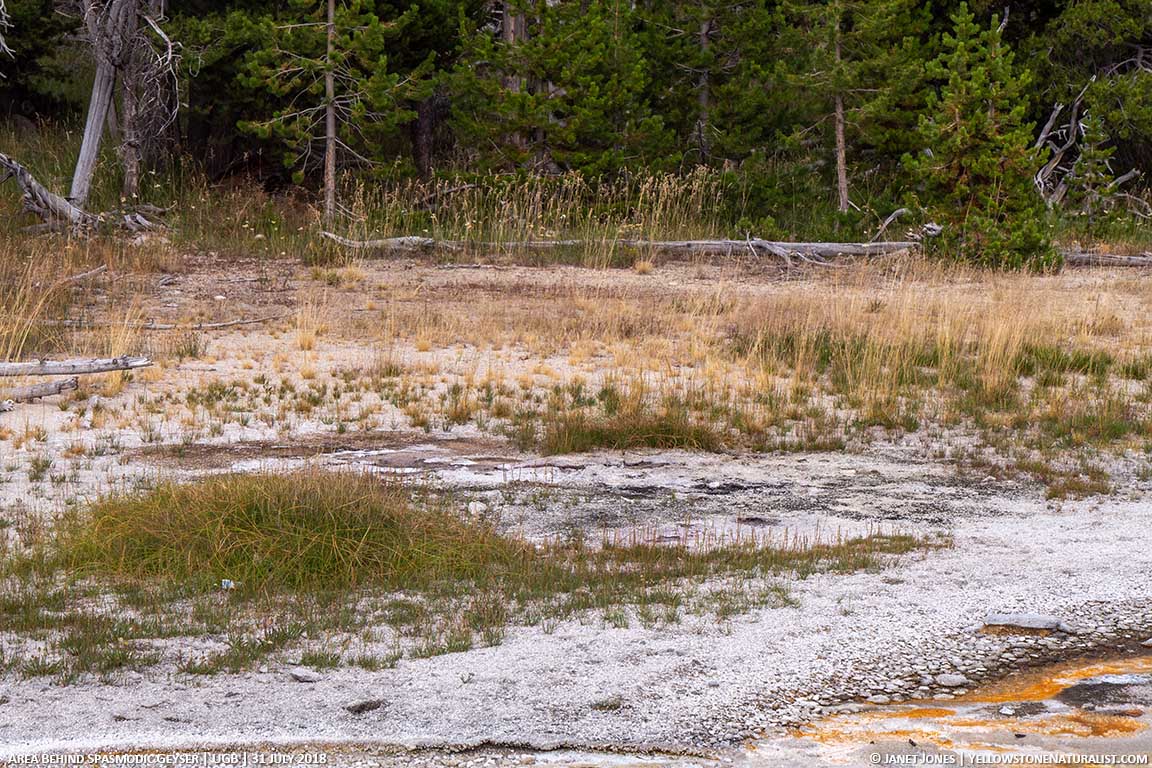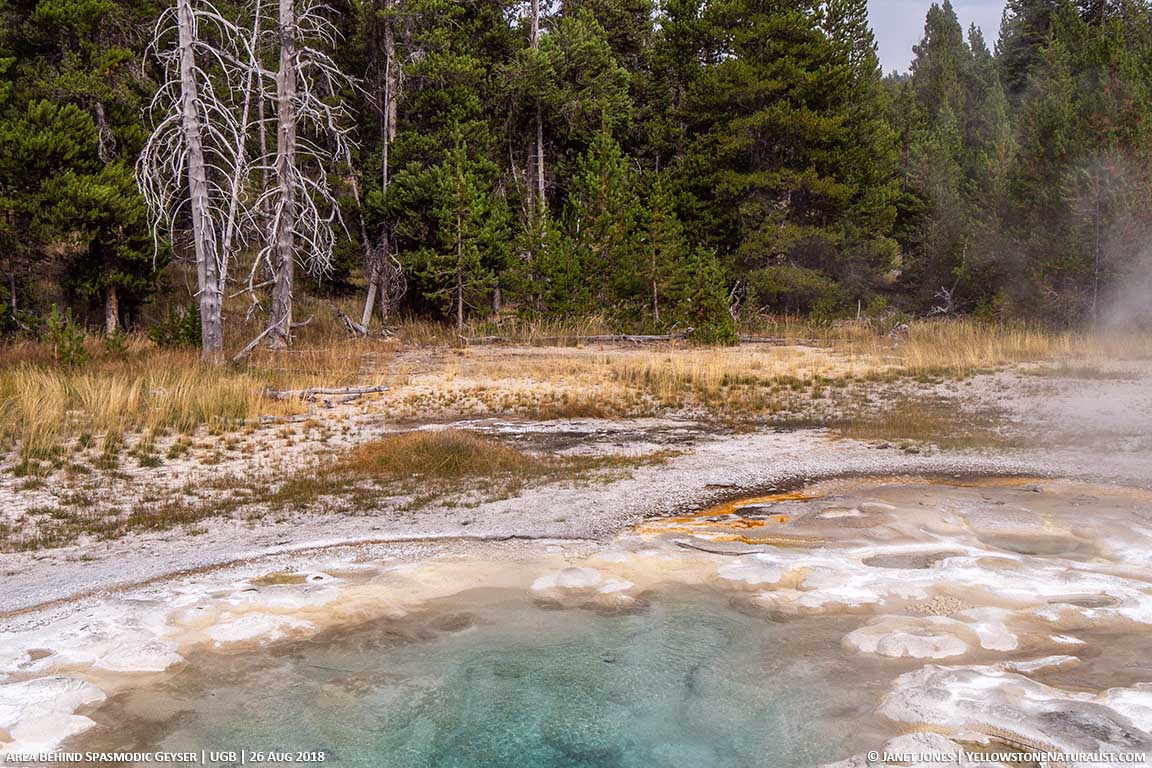Get to know the area behind Spasmodic Geyser
In this post, I’m following up last Thursday’s post with observations about an area that may be part of the changes we’ve seen in the Sawmill Group. To best watch this area, though, you may need binoculars or a long lens on a camera to really see the details as it’s quite far from the boardwalk. This area may help to explain why we’re seeing “Spasmodic Mode” in the Sawmill Group. Or at least that’s a theory I have.
THE AREA BEHIND SPASMODIC GEYSER
To find this area to watch, head to the Sawmill Group (labeled photo) and find Spasmodic Geyser. The area this post is about is located behind Spasmodic Geyser.
One thing I learned while pulling together photos for this area is that I don’t have a lot of photos of Spasmodic. I think that’s because it’s difficult to get all of it in the frame. But I did find this photo of it from 2009 as a “before” shot. You might have a photo of this area that’s more recent. Ideally, I’d love to see what it looked like in 2016. If you do, please put a link to it in the comments.
WHEN DID THIS START?
In May 2017, after the Sawmill Group had changed behavior, I sat at Spasmodic and took detailed notes. In all the time there, watching and looking for anything I might have missed, I didn’t notice this area at all. That tells me that likely there wasn’t anything out of the ordinary to observe. In a video I took that weekend, there are a few gaps in the steam that make me think that’s the case. I also took a couple of photos with my camera – one with the FLIR attachment (affiliate link) and overlayed the infrared image over the regular one. Unfortunately, it didn’t quite capture this spot, but you can see a small edge of this area showing pink as a hotter area.
In reviewing the photos for this post, I can see in 2017, most of the water showing sat in small depressions in the sinter (the rock formed by the silica in the water from the thermal features). These were likely made from bison walking through.
2018 COMPARISON PHOTOS
Over the last year, it looks like there are more solid little vents there. This, I gather, developed from the silica in the water depositing on the bits of sinter, binding them together. That indicates water rising regularly here. However, even looking at this spot most every time I passed by, I didn’t see the bubbling water at any point in this past year. It very well may be that the water rises there when Spasmodic is erupting and the steam blocks the view.
A THEORY (OR WILD GUESS AND SPECULATION)
Could the energy in this group that’s known to shift, have opened a pathway to this underground thermal feature? We watched the opening of a new small thermal feature near Plume Geyser (now dormant as it most likely blew out its plumbing system). This thermal feature, “Tangram Geyser” as I call it (the name suggested by Gordon Bower), broke open slowly in geometric shapes like tangram puzzle pieces falling away. That energy was there slowly making its way to the surface.
With this spot to watch, the energy may be making a slow shift again, this time away from the Spasmodic area. We are seeing Old Tardy Geyser more often and “Nifty Geyser” is no longer a perpetual spouter. If that’s the case, then this spot may look like this for years to come.
There’s also the possibility that this new (to the surface) thermal feature may spell the end to seeing the other geysers in this group. That would be unfortunate, but change is the only constant and that applies heavily to the geyser basins in Yellowstone. I certainly hope this isn’t the case. Old Tardy’s renewed activity gives me hope that we’ll see the others again as well.
DOCUMENTING SMALL CHANGES
Another reason for my decision to share this information here is because there simply needs to be a record of this. So, in the future, if this area becomes another member of the Sawmill Group, it’s not thought to be something suddenly new.
With the small changes seen on Geyser Hill prior to the unusual behavior last fall, I wish I had taken the time to write up my observations and thoughts more thoroughly so others who had the time and inclination may have been able to gather more thorough observations than I did. So, with this one, I’m doing that now – in hopes that more observations will garner better understanding for all who are interested.



